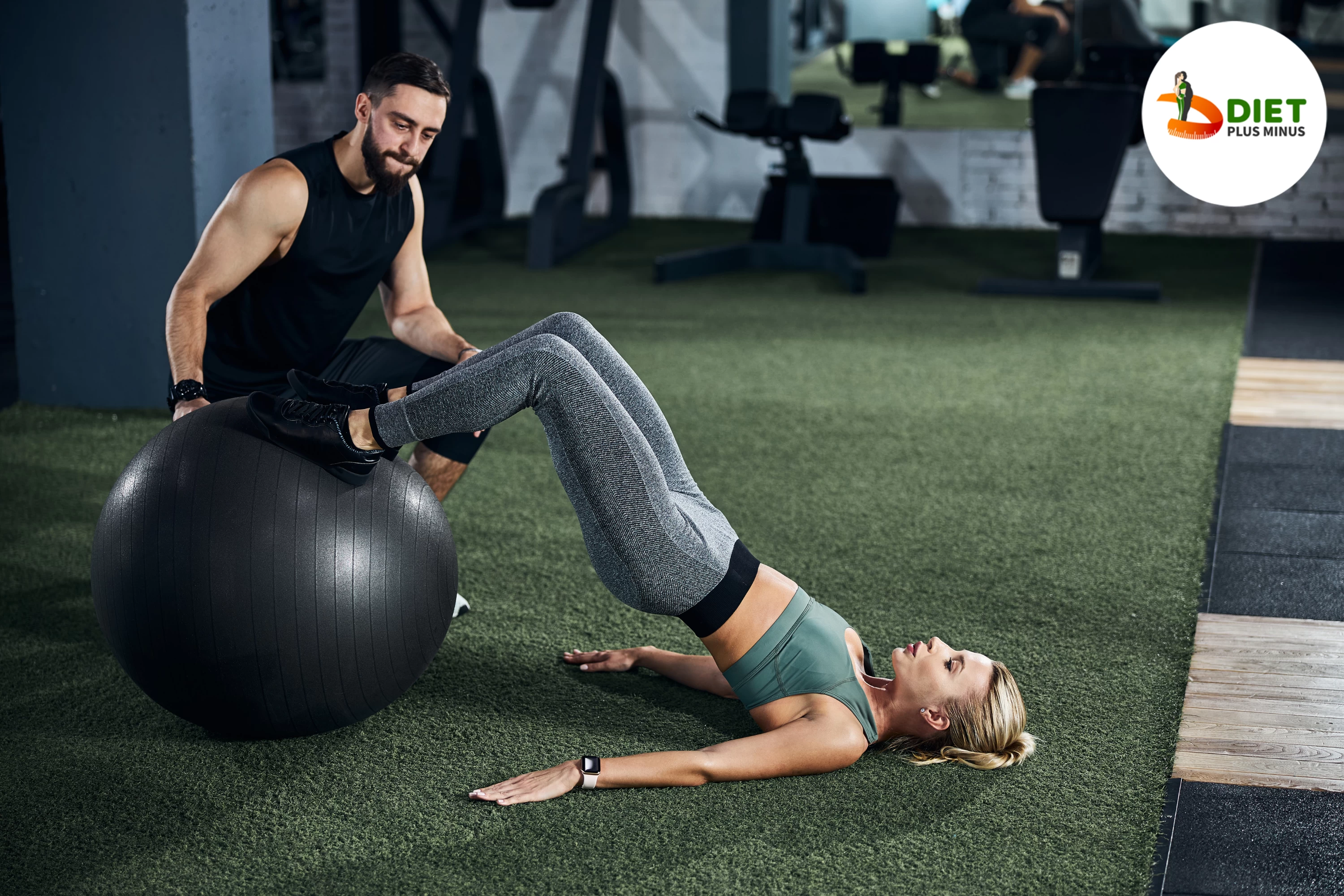Hamstrings: Ball Hamstring Curls

Hamstring Ball Curls
Hamstring ball curls strengthen back-thigh muscles. They require only an exercise ball or stability ball. Lying on your back with your heels on the ball and arms at your sides, perform a hamstring ball curl. Raise your hips and slowly roll the ball towards you, bending your knees. Hold this position for a few seconds before slowly rolling the ball back to starting position.
This exercise works the hamstrings, glutes, calves, and lower back. .
. To keep challenging yourself and building muscle in this area, gradually increase weight or resistance as strength improves. Hamstring curls improve posture, balance, and lower body strength.
Anatomy: Structure & Function
The biceps femoris, semitendinosus, and semimembranosus are the hamstrings. These muscles move hips and knees. Ball hamstring curls work well. Lying on your back with a stability ball under your heels, lift your hips while keeping your feet on the ball.
Ball hamstring curls work the glutes, lower back, and knee flexors. It improves lower body strength, flexibility, balance, and coordination. This low-impact exercise can be modified for different fitness levels by changing the ball position or repetitions.
Ball hamstring curls should be done correctly to avoid injury. Keep your core engaged, lift with control using only your hamstrings/glutes (not momentum), and avoid arching your back or pushing up into a "bridge" position. This and other hamstring-targeting exercises will improve your legs and athletic performance.
Benefits: Building Strength
Ball hamstring curls strengthen lower body hamstrings, which are vital. This workout strengthens the hamstrings and glutes. .
Ball hamstring curls improve posture. Strengthening these muscles helps support your spine and prevents back pain from poor posture. Stronger hamstrings help you lift heavier weights in squats and deadlifts.
Strong hamstrings improve athletic performance. They boost running and jumping speed. Ball hamstring curls can improve daily life and physical performance.
Form: Technique & Posture
Ball hamstring curls require proper form and posture. Start by lying down with the exercise ball under your feet. Avoid injury by engaging your core throughout the exercise. Lift your hips slowly with your feet on the ball and knees bent at 90 degrees.
Avoid arching your lower back or sagging your hips. Keep your shoulders and knees straight. Exhale when lifting and inhale when lowering. For best results, increase repetitions and sets as you get used to this exercise.
Overall, ball hamstring curls require proper technique and posture. Maintaining good form by engaging your core muscles, keeping a neutral spine position, lifting slowly but steadily, and controlling each repetition of exercises will help you achieve maximum benefits without risking injuries that could slow your fitness goals!
Intensity: Progression & Variation
Intensity is essential for muscle growth. . Progression and variation apply here. Variation prevents stagnation by changing your workout routine, while progression gradually increases muscle demands.
Ball hamstring curls demonstrate progression and variation to increase intensity. Start by doing fewer reps with a heavier ball or weight plates. Increase reps or use a stability ball as you get stronger.
Hamstring curl types can also be varied. For variety and muscle activation, try Romanian deadlifts or Nordic curls instead of ball hamstring curls. With proper progression and variation techniques in your workouts, you'll get better results without risking injury from overuse or monotony.
Safety: Injury Prevention
Strengthening the hamstrings can prevent sports-related hamstring injuries. Ball hamstring curls strengthen the hamstrings and improve athletic performance. Lying on your back with your feet on an exercise ball, lift your hips off the ground and curl your legs towards you.
. To avoid injury, this exercise must be done properly. Start slowly and increase the difficulty as your body adapts to the movements.
Ball hamstring curls improve strength and agility while preventing hamstring injuries. If you've had injuries or medical conditions that could be affected by exercise, consult a doctor before starting a new workout programme.
Conclusion
Finally, physical activity should prioritise injury prevention. Ball hamstring curls reduce hamstring injury risk. This hamstring-strengthening exercise reduces strains and tears.
Ball hamstring curls seem simple, but proper technique is essential for optimal results and injury prevention. Don't arch your back and keep your hips lifted. Exhaling while curling the ball can also strengthen your core.
Ball hamstring curls improve athletic performance and musculoskeletal health. Preventing hamstring strains lets people exercise painlessly.
In Short:
Steps involved:
-
Lay on your back with a stability ball underneath your feet.
-
Simultaneously extend your knees and hips fully.
-
Keep your hips extended and flex your knees.
-
Flex your hamstring and return back to the beginning position, Repeat.
Do’s:
-
Keep your glutes tight throughout the range of motion.
-
Control the lowering portion as much as possible.
-
Perform it in the tail end of your lower body exercise i.e. after squats and deadlift.
Don’ts:
-
Don’t let the hips fall toward the floor.
-
Do not workout till failure.
